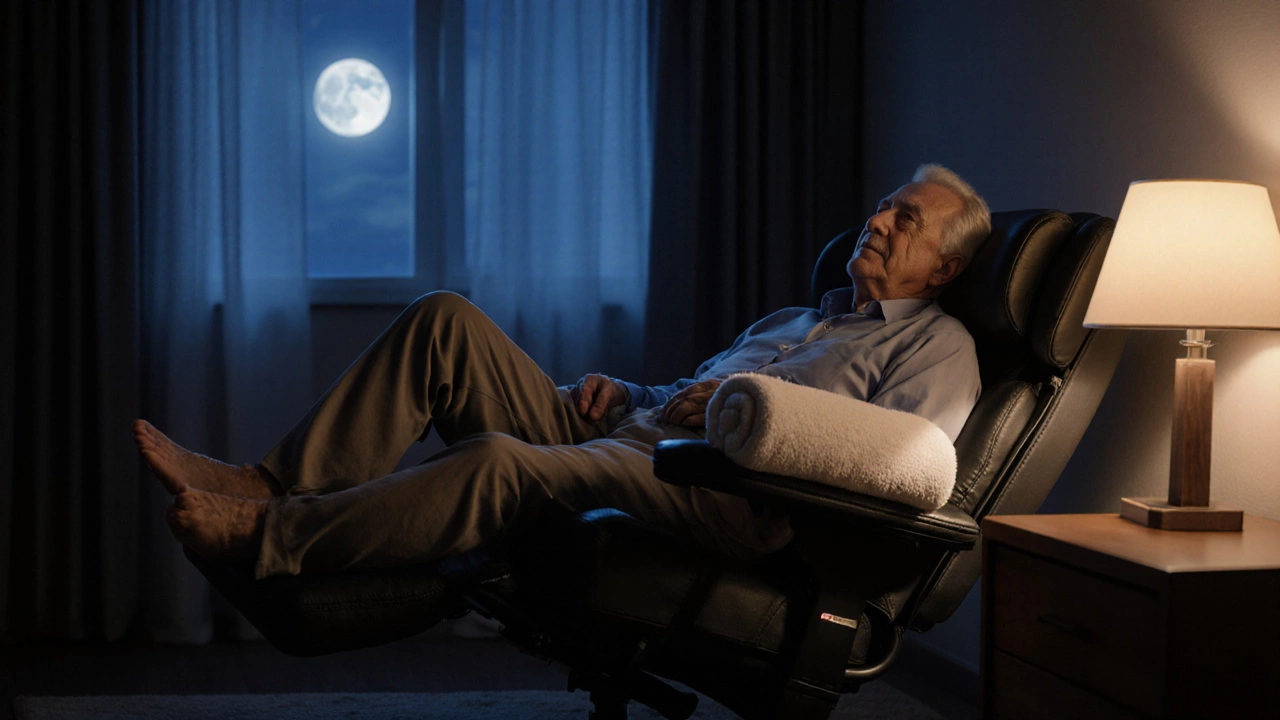
Is It Safe to Sleep in a Recliner Every Night?
Sleeping in a recliner every night isn't ideal for your spine or circulation, but it can be safe with the right setup. Learn when it's okay-and when to switch back to a bed.
When you overnight recliner use, the practice of sleeping or resting in a recliner chair for extended periods, often through the night. Also known as recliner sleep, it’s become a common alternative to beds for people with back pain, acid reflux, or breathing issues. But just because it feels comfortable doesn’t mean it’s healthy long-term. Many users wake up stiff, with numb legs or aching hips—not because the chair is broken, but because it doesn’t support the body the way a bed should.
Leg circulation, how blood flows through the lower limbs while seated is one of the biggest concerns. Sitting with legs bent or dangling for hours cuts off blood flow, which can lead to swelling, tingling, or even deep vein thrombosis in extreme cases. This isn’t just a theory—studies show people who sleep in recliners regularly report more leg discomfort than those who sleep flat. And it’s not just your legs. Your spine, hips, and neck all rely on proper alignment. A recliner that doesn’t support your lower back or keeps your head tilted can cause morning pain that lasts all day.
That said, ergonomic seating, furniture designed to match the natural curves of the body and reduce strain isn’t the enemy. Some recliners—especially zero-gravity or adjustable models—are built to take pressure off the spine and improve circulation. Chiropractors often recommend them for short-term relief after surgery or for people with severe sciatica. The problem isn’t the recliner itself. It’s using the wrong one, or using it the wrong way. If you’re sleeping in one every night, you need to check the angle of your knees, the support under your lower back, and whether your feet are flat or hanging. A pillow under your knees or a footrest can make a huge difference.
And then there’s sleep posture, the position your body takes while resting. Most people don’t realize that lying flat isn’t the only healthy option. Elevating your head slightly helps with acid reflux. Keeping your hips level with your knees reduces pressure on your lower back. But these benefits vanish if your chair sags, your footrest is too low, or you’re slumped sideways. It’s not magic—it’s physics. Your body needs support, not just cushioning.
What you’ll find below are real stories and practical fixes from people who’ve tried sleeping in recliners—and lived to tell the tale. Some switched chairs. Some added supports. Others stopped altogether. Each post cuts through the noise and gives you clear, no-fluff advice based on actual experience. No marketing hype. No vague claims. Just what works, what doesn’t, and why.

Sleeping in a recliner every night isn't ideal for your spine or circulation, but it can be safe with the right setup. Learn when it's okay-and when to switch back to a bed.